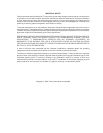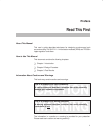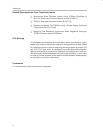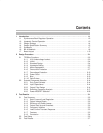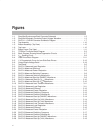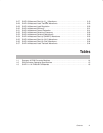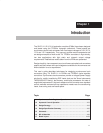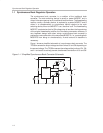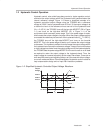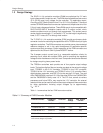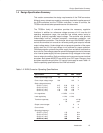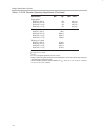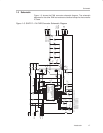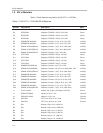
1-1
Introduction
Introduction
The SLVP111/112/113/114 evaluation modules (EVMs) have been designed
and tested using the TPS56xx hysteretic controllers. These boards are
synchronous dc-dc buck converters with fixed output voltages of 3.3 V, 2.5 V,
1.8 V and 1.5 V respectively. They use only surface mount components and
are design examples of how to use TI’s TPS56xx controllers in high density,
low loss applications with tight static and dynamic output voltage
requirements. Detailed test results taken from the EVMs are presented.
Design simplicity, low component count, and lower cost make buck converters
popular solutions where low input voltages are available for the converter and
where isolation is not a requirement.
This user’s guide describes techniques for designing synchronous buck
converters using TI’s SLVP111–114 EVMs and TPS56xx ripple regulator
controllers. Synchronous buck converters provide an elegant power supply
solution for rapidly transitioning DSP loads (such as the Texas Instruments
TMS320C62x/67x family), fast memory, and similar processors. An order of
magnitude improvement in dynamic response of this converter over standard
control methods reduces hold-up capacitance needs near the transitioning
loads, thus saving cost and board space.
Topic Page
1.1 Synchronous Buck Regulator Operation 1–2. . . . . . . . . . . . . . . . . . . . . . . .
1.2 Hysteretic Control Operation 1–3. . . . . . . . . . . . . . . . . . . . . . . . . . . . . . . . . . .
1.3 Design Strategy 1–4. . . . . . . . . . . . . . . . . . . . . . . . . . . . . . . . . . . . . . . . . . . . . . .
1.4 Design Specification Summary 1–5. . . . . . . . . . . . . . . . . . . . . . . . . . . . . . . . .
1.5 Schematic 1–7. . . . . . . . . . . . . . . . . . . . . . . . . . . . . . . . . . . . . . . . . . . . . . . . . . . .
1.6 Bill of Materials 1–8. . . . . . . . . . . . . . . . . . . . . . . . . . . . . . . . . . . . . . . . . . . . . . .
1.7 Board Layout 1–10. . . . . . . . . . . . . . . . . . . . . . . . . . . . . . . . . . . . . . . . . . . . . . .
Chapter 1




